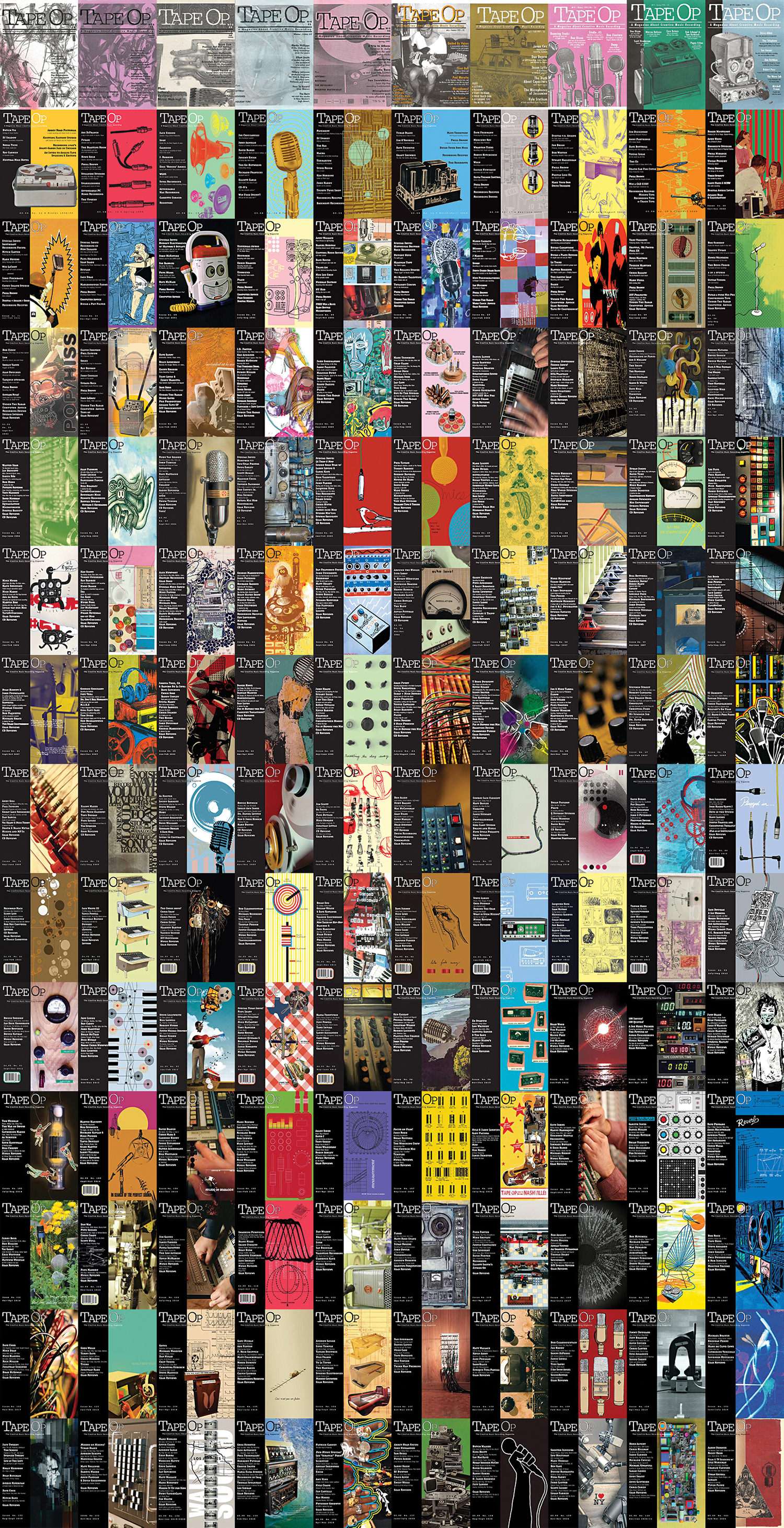I was an early adopter of Universal Audio’s UAD plug-in platform. My 2003 Power Macintosh G5 may have housed only a single UAD-1 DSP Card [Tape Op #41], but at the time, I thought the world of audio couldn’t get any better. No one could touch what Universal Audio was doing with their digital recreations of classic analog processors. Twenty years later, a great deal has changed in the worlds of computing power and recording options in general, and yet still Universal Audio remains at the top of their game with their continually growing catalog of analog emulations, signal processing, and most recently virtual instruments for their new Luna [#138] platform. For me, one of the most substantial achievements Universal Audio has made was when they implemented their Unison™ technology in 2014, allowing anyone with UA’s proprietary hardware (Apollos) to record through software preamp emulations on the way into their DAW. Seven years later it’s still a game-changer for me.
Over the past couple of months, I’ve spent a great deal of time putting Universal Audio’s Neve 1084 preamp/EQ plug-in through several sessions. With the Apollo interface in my studio, I’ve been using the 1084 as a Unison™ plug-in for tracking, and also in Logic’s signal path when mixing. As a brief historical overview, the original hardware Neve 1084 combines the clarity and sonic characteristics of their renowned 1073 mic preamp, while extending that unit’s EQ abilities. Not only does it add frequency options, but it also allows you to toggle wide or narrow Q on the mid band, adds a low-pass filter, and gives slightly different hi-pass filter frequency points (at 45 Hz, 70 Hz, 160 Hz, and 360 Hz). Like UA’s 1073 emulation, the 1084 has been modeled from the actual piece of hardware – the mic/line input through the Penny and Giles fader, along with the Hi/Lo impedance switch (for additional coloration options that you’d normally have to crawl under a console to achieve), plus a -20 dB pad. All boxes checked.
I’m a sucker for a Neve pre on rock vocals, so armed with my trusty Lawson L251 tube mic and the new Stellar X3 FET condenser by TZ Audio, it was no surprise that this plug-in shined while tracking both male and female singers on either mic. Recording through the plug-in gave me a sound that was immediately present and full – even with the EQ engaged but left flat. I almost always crank that iconic red mic pre knob to achieve some harmonic coloration, and then back off the output fader to match levels. While I appreciate the additional hi-frequency options on the 1084 plug-in (at 10 kHz, 12 kHz, and 16 kHz – as opposed to the static 12 kHz on the 1073), I find myself frequently boosting the hi-end shelf mostly on vocals and then engaging the lo-pass filter so that the vocals remain clear yet without that “spitty” quality and occasional harshness that can occur when going too far. The 1084 plug-in give me silkiness, with an in your face and (dare I say) romantic quality when using it on vocals.
I remember frequently tracking drums in Los Angels during the mid-2000s – always at studios that had racks full of Neve 1073s (or a dedicated Neve console). We’d then bring back the recorded drums into another studio that was a bit more budget-friendly. We did this because something happens to drums when tracked thru 1073s/1084s. I don’t have the luxury of tracking live drums in my space, but inserting the 1084 plug-in on recorded drums is a joy, making them sound fuller. Then, when you start to push the preamp section and the EQ, the magic begins. Drums sound huge, punchy, and present – even without compression! Adding some weight around 60 Hz, and then engaging a hi-pass filter at 45 Hz does some lovely things to the tone while adding definition to kicks. I found myself approaching snares the same way – albeit using different frequencies and enabling the HI-Q option on the mid EQ to give it some bite and presence at a more precise and narrow EQ point. When dealing with overheads, I’d frequently add a bit of “air” to the top (around 12 kHz) along with some low shelf weight. Drums may benefit from the 1084 plug-in, but this channel is perfect for bass guitar. Pushing the low shelf at 220 Hz is sometimes all you need for that sought after weight and depth necessary for the low end of your track. Both acoustic guitar and synth bass shine here as well, but there’s more! Electric and acoustic guitar through the 1084 plug-in is incredibly special, as what might tend to be harsh or too aggressive when boosting the midrange with other EQs nearly always comes out warm and creamy here. Tracked electric guitars already have a certain compression going on, so feel free to push some mids and be ready to smile.
This is a luxurious channel. Whether using the 1084 plug-in to track (through a Unison™ slot in an Apollo) or as an insert during mix, it simply sounds amazing. The 1084 plug-in may seem a bit odd at first if you’re used to using a multiband parametric EQ, but don’t let this be daunting, because you’re in for some absolutely stellar sonics. By using the hi- and low-pass filters in conjunction with the specified frequency points, you can totally craft the type of tone you’re after. You can find your results so much faster with the 1084 plug-in as it sounds tremendously gorgeous while pushing and pulling around the frequencies you want to address. This is a keeper.




_disp_horizontal_bw.jpg)